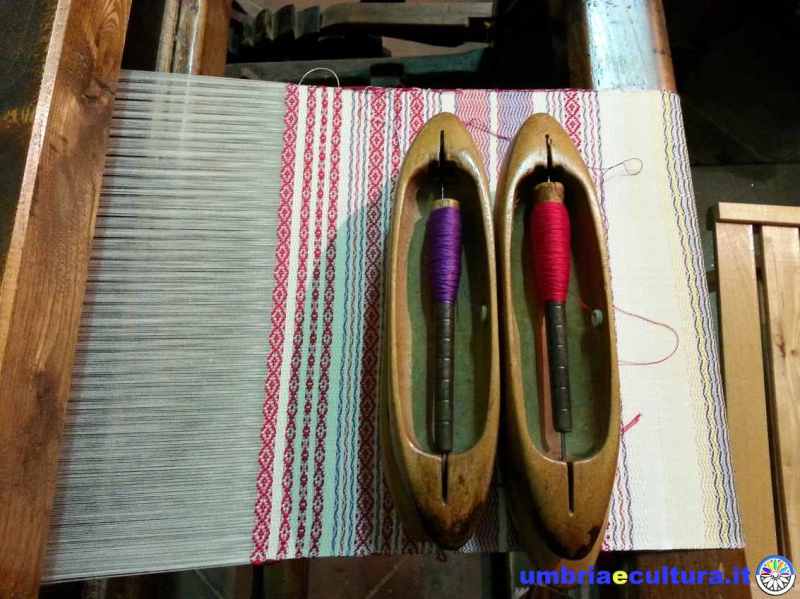The Giuditta Brozzetti textile workshop produces precious handmade fabrics inspired by the medieval and Renaissance Umbrian tradition thanks to ancient looms.
The place: San Francesco delle Donne, a church now deconsecrated within the walls of the ancient city of Perugia, dedicated to the Saint of Assisi and erected when he was still alive, built on the place he chose as a shelter during his stops in Perugia. It is the oldest of the Franciscan churches in the city and among the oldest in Italy.
The ownership of the church, in 1250, passed from the Franciscans to a convent of Benedictine nuns, changing its original appearance and the name “San Francesco delle Donne” (St. Francis of women).
The use of the building as a work place began in the Napoleonic era, when, following the expropriations wanted by Napoleon to damage the Church, the complex was used as a silk spinning mill, owned by Count Faina.
After the most varied uses, the lot of buildings, including the church, was auctioned and purchased by the father of Marta, Giuditta Brozzetti’s son in law, enthusiastic and tenacious custodian of the treasure that we are about to disover.
From 1994 this beautiful church became the seat of the Giuditta Brozzetti weaving workshop.
A theory of frames unfolds along the nave, original frames from the 1700s and 1800s, still fully functional.
The oldest is a loom from around 1750, whose weaving technique dates back to medieval times, with four “healds” (instruments where the warp threads controlled by pedals pass, in order to perform the desired ornamental motif): from ancient Rome the healds used in the looms were two, from the Middle Ages onwards they increased in number to allow the realization of a greater variety of decorative motifs.
With the feet, the pedals that control the healds step up and down as the shuttle moves back and forth, and the case hitting the threads of the fabric.
The medieval Perugia tablecloths were made with four healds and an indefinite number of “liccetti”, depending on the complexity of the decorative motifs … a work of enormous difficulty, but with an impressive result.
In Umbria, until the second post-war period, women used to weave at home on the loom, both to make kits and to produce exchange goods. Generally these were very simple canvases, made with two heald frames, with elementary decorative motifs. Some weavers, however, knew more complex techniques for setting the “lacing” and were therefore able to carry out work of great value and beauty. Marta’s great-grandmother, Giuditta, fell in love with this tradition and founded, in 1921, the textile workshop.
Giuditta purchased the nineteenth-century jacquard looms, which work thanks to perforated cards that act on the warp threads.
The work became faster but much more tiring: there is only one pedal, but it acts on a considerable number of weights attached to the warp threads (which replace the heddles), a number that varies depending on the size of the loom, accentuating noticeably physical fatigue.
Here the warp is always made of cotton, but the weave can be of the most varied material, from silk to gold.
This technique is about to disappear but is coming to life thanks to the stubbornness of Marta who, patiently, recovered the drawings from the ancient Renaissance paintings,as an amazing stole that reproduces the one that wraps Baby Jesus in a canvas by Pinturicchio.
An infinite poetry, pure art and passion, love for this immense treasure of knowledge inherited from Marta after being preserved and enhanced by her grandmother first and then by her mother in Giuditta Brozzetti textile workshop.
A visit that inebriates the view and fills the heart. The fabrics are of absolute beauty: the Perugian tablecloths that can be admired at the National Gallery of Umbria come back to life in our hands, motifs made from frescoes and paintings adorn fabrics of absolute value.
Benedetta Tintillini
Find Giuditta Brozzetti Textile workshop on Google Maps:



